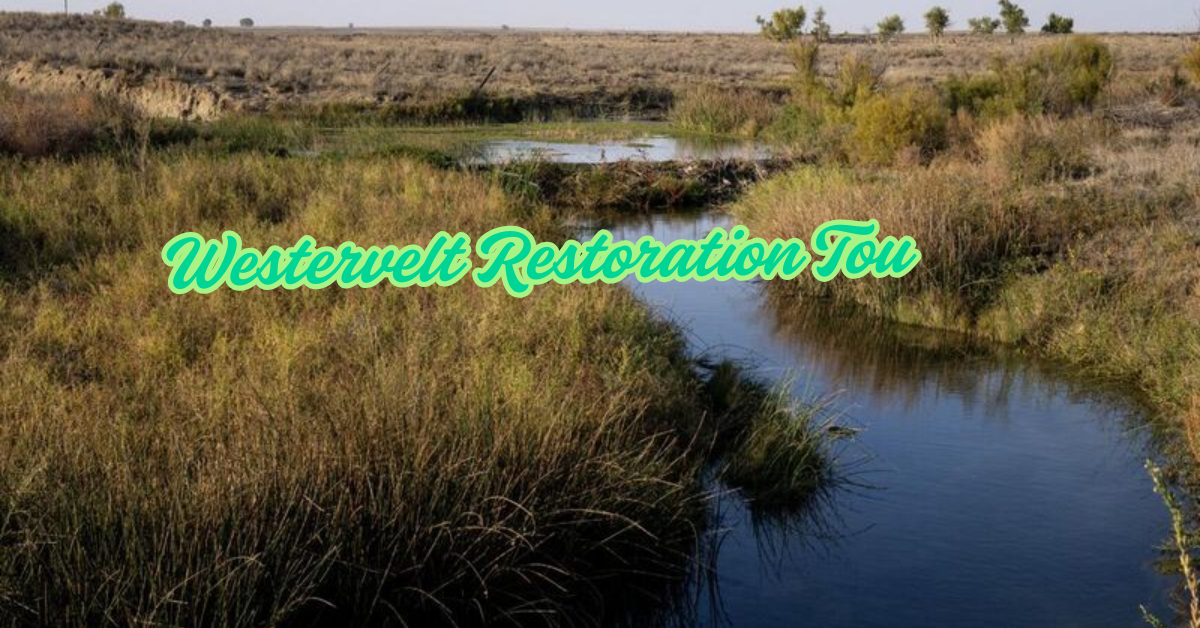Introduction to Westervelt Restoration
Restoration is more than just fixing what’s broken; it’s about breathing new life into landscapes and ecosystems. At the forefront of this mission is Westervelt Restoration Tou, a leader in effective restoration techniques that not only revitalize but also enhance the natural environment. Whether it’s restoring wetlands, forests, or grasslands, their expertise shines through in every project they undertake.
Imagine wandering through a flourishing habitat where wildlife thrives and native plants flourish—this isn’t merely a dream. It’s the reality crafted by Westervelt Restoration Tou‘s dedicated team. In this guide, we’ll explore the essential strategies employed by these experts to make impactful changes to our natural world. From innovative practices to successful case studies, let’s dive deep into how Westervelt Restoration Tou continues to set benchmarks in restoration efforts nationwide.
The Importance of Restoration Techniques
Restoration techniques play a crucial role in revitalizing ecosystems. They help to repair damage caused by human activities and natural disasters. Without effective methods, many habitats could face irreversible harm.
These techniques not only restore biodiversity but also enhance the resilience of environments. A healthy ecosystem can better withstand challenges like climate change and invasive species.
Moreover, restoration contributes to improved air and water quality. By rehabilitating landscapes, we foster a healthier planet for all living beings.
Investing time into these practices nurtures community engagement as well. People develop a sense of responsibility towards their surroundings when they witness positive changes firsthand.
Effective restoration techniques are essential for sustaining ecological balance while promoting harmony between humans and nature.
Types of Restoration Techniques Used by Westervelt
Westervelt employs a range of innovative restoration techniques tailored to the specific needs of each project. Their approach often starts with ecological assessments, identifying key species and habitats that need support.
One method they use is reforestation, which involves planting native trees and shrubs to restore lost forest ecosystems. This not only enhances biodiversity but also improves soil health.
Wetland restoration is another critical technique. By revitalizing wetlands, Westervelt helps filter pollutants and supports wildlife habitats essential for various aquatic species.
Additionally, prescribed burning plays an important role in their strategy. This technique reduces invasive plant species while promoting the growth of fire-adapted plants.
Erosion control measures are implemented to stabilize soils and prevent further degradation. These diverse methods showcase Westervelt’s commitment to effective environmental stewardship through science-driven practices.
Case Studies: Successful Restoration Projects
Westervelt Restoration has a strong portfolio of successful projects that showcase its expertise. One standout case is the restoration of the wetlands in Alabama. Through strategic plantings and hydrology adjustments, they revived crucial habitats for local wildlife.
Another project involved revitalizing a degraded forest area in Mississippi. By employing selective thinning and controlled burns, Westervelt enhanced biodiversity while improving overall ecosystem health. The results speak volumes: vibrant flora flourished, attracting various species back to their natural habitat.
In Florida, a coastal dune restoration was executed with precision. Utilizing native vegetation helped stabilize sandy shores while providing essential protection against erosion.
These examples highlight Westervelt’s commitment to effective techniques tailored to each unique environment. Each project not only restores land but also supports community engagement and education about ecological stewardship.
Benefits of Using Westervelt for Restoration
Choosing Westervelt for restoration brings a wealth of advantages. Their expertise spans various environments, ensuring tailored solutions that meet specific needs.
One significant benefit is their commitment to sustainability. Westervelt employs eco-friendly techniques that not only restore landscapes but also enhance biodiversity. This approach fosters healthier ecosystems.
Additionally, the team at Westervelt leverages advanced technology and innovative methods. This dedication to staying ahead in the industry translates into effective and efficient results.
Clients often appreciate their comprehensive planning process. From initial assessment to final implementation, every step involves clear communication and collaboration with stakeholders.
Westervelt’s impressive track record speaks volumes. Successful projects across diverse terrains showcase their ability to deliver on promises consistently, providing peace of mind for those seeking restoration services.
Tips for Maintaining Restored Areas
Maintaining restored areas requires consistent effort and attention. Start by conducting regular inspections to identify any signs of deterioration or invasive species. Early detection can save time and resources.
Implement a schedule for routine maintenance tasks, such as mowing, trimming, or cleaning up debris. Keeping the area tidy not only enhances its appearance but also promotes healthier ecosystems.
Consider using native plants in your landscaping efforts. These species thrive in local conditions and require less water and care over time.
Engage with the community by organizing volunteer days focused on restoration upkeep. This fosters a sense of ownership among residents while ensuring that work gets done efficiently.
Stay informed about best practices in ecological management through workshops or online resources. Knowledge is key to sustaining the beauty and function of restored environments long-term.
Conclusion: Why Choose Westervelt for Your Restoration Needs?
Choosing Westervelt Restoration Tou for your restoration needs is a decision that comes with numerous advantages. With a proven track record of successful projects, their expertise in various restoration techniques sets them apart from competitors. The focus on ecological balance and sustainable practices ensures that every effort contributes positively to the environment.
Westervelt Restoration Tou‘s commitment to quality is evident in their attention to detail and dedication to achieving lasting results. Their team of skilled professionals brings years of experience, ensuring that each project meets high standards while also addressing the specific needs of the area being restored.
Moreover, working with Westervelt Restoration Tou means gaining access to valuable knowledge about maintaining restored areas effectively. They don’t just restore; they empower clients with tips and strategies for ongoing care, ensuring longevity in all endeavors. This holistic approach solidifies Westervelt Restoration Tou‘s reputation as a leader in restoration services.
For anyone looking into restoration options, considering Westervelt Restoration Tou means aligning with an organization that prioritizes effectiveness and sustainability—key ingredients for successful environmental stewardship.
Learn more about Rock Paper Scissors and the Yellow Dress in our related article here.


